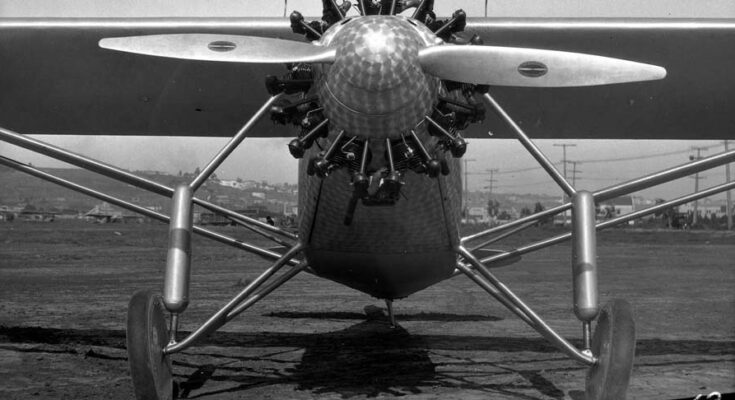The history of aviation is one of humanity’s most awe-inspiring journeys — from early dreams of flight to the sophisticated aircraft of today. It is a story of ambition, innovation, triumph, and transformation. Across centuries, visionaries and inventors have steadily pushed the boundaries of what was once thought impossible: conquering the skies.
Let’s embark on a detailed look through the fascinating evolution of aviation.
Early Dreams and Ancient Aspirations
Long before the first successful flights, ancient civilizations dreamed of flight. Mythologies are filled with references to flying — from the Greek myth of Icarus and Daedalus to ancient Chinese kites, which date back to around 500 BCE. These early efforts, while symbolic and imaginative, laid the groundwork for humanity’s long-held desire to fly.
In the Renaissance, the famous polymath Leonardo da Vinci sketched detailed designs of flying machines, including an “ornithopter” — a device intended to achieve flight by flapping wings like a bird. Though none of his machines flew, da Vinci’s studies of aerodynamics and lift were visionary and contributed to future understandings of flight principles.
The Age of Lighter-Than-Air Flight
The first real steps toward human flight involved lighter-than-air vehicles. In 1783, the Montgolfier brothers from France launched the first successful manned hot air balloon flight. Their balloon, filled with heated air, lifted off the ground with two passengers aboard, stunning the world.
Shortly afterward, Jacques Charles and the Robert brothers introduced hydrogen-filled balloons, allowing longer and more controllable flights. Throughout the late 18th and 19th centuries, ballooning became popular both for entertainment and exploration. However, balloons were at the mercy of the wind and lacked true navigational control.
The development of dirigibles — steerable airships powered by engines — such as those built by Count Ferdinand von Zeppelin in the early 20th century, offered a glimpse into controlled air travel. However, lighter-than-air flight would soon be eclipsed by the invention of heavier-than-air flying machines.
The Wright Brothers and the Birth of Powered Flight
The true revolution in aviation came with Orville and Wilbur Wright, two American bicycle mechanics and inventors. After years of study, experimentation, and glider flights, they achieved the first controlled, powered, and sustained heavier-than-air human flight on December 17, 1903, near Kitty Hawk, North Carolina.
Their aircraft, the Wright Flyer, stayed aloft for 12 seconds and covered 120 feet. Though modest, this flight was historic. The Wright brothers continued to refine their designs, introducing innovations like the three-axis control system, which remains a fundamental principle in aircraft design.
The Golden Age of Aviation
Following the Wright brothers’ success, aviation advanced rapidly. By World War I (1914–1918), airplanes were being used for reconnaissance, bombing, and dogfighting. The war accelerated technological improvements, such as stronger engines, better aerodynamics, and more durable aircraft structures.
The postwar period, often called the Golden Age of Aviation (1919–1939), saw daring pilots like Charles Lindbergh achieve record-breaking feats. Lindbergh became a global icon when he made the first solo nonstop transatlantic flight from New York to Paris in 1927 aboard the Spirit of St. Louis.
Amelia Earhart, another pioneering figure, became the first woman to fly solo across the Atlantic in 1932, inspiring generations to follow their dreams regardless of the odds.
This era also saw the growth of commercial aviation. Airlines such as Pan American Airways, Lufthansa, and Imperial Airways began offering regular passenger services, introducing the world to air travel.
Aviation During World War II
World War II (1939–1945) was another period of massive advancement in aviation technology. Aircraft became faster, larger, and more specialized. Fighters like the Supermarine Spitfire and Messerschmitt Bf 109 dominated the skies, while bombers like the B-17 Flying Fortress and the Lancaster delivered unprecedented aerial firepower.
Perhaps most notably, WWII introduced the world to jet propulsion. The German Messerschmitt Me 262 was the first operational jet-powered fighter aircraft, signaling the beginning of the jet age. Meanwhile, the Americans developed the B-29 Superfortress, which would famously drop the first atomic bombs.
Air power became crucial to military strategy, and the conflict demonstrated the decisive role of control of the skies in modern warfare.
The Jet Age and the Rise of Commercial Air Travel
Post-WWII saw the explosion of commercial aviation, fueled by surplus military aircraft, improved engine technology, and new international markets.
The first jetliner, the de Havilland Comet, entered service in 1952, offering speeds and altitudes unattainable by piston-engine aircraft. Though early models suffered from tragic design flaws, lessons learned from these incidents led to safer, stronger aircraft designs.
Boeing’s 707, introduced in 1958, revolutionized air travel. With its powerful jet engines and large passenger capacity, it made international travel more accessible and affordable. Airlines like Pan Am and TWA expanded globally, and flying shifted from being a luxury experience to a common mode of transportation for millions.
The Concorde, developed jointly by Britain and France, entered service in 1976, offering supersonic travel between major cities. Despite its iconic status, high operating costs and environmental concerns eventually led to its retirement in 2003.
Space Exploration: The Ultimate Flight Frontier
Aviation’s influence extended beyond Earth’s atmosphere during the mid-20th century. Rockets, initially developed for military purposes, laid the foundation for space exploration.
In 1961, Soviet cosmonaut Yuri Gagarin became the first human to orbit Earth. Eight years later, Neil Armstrong and Buzz Aldrin set foot on the Moon during NASA’s Apollo 11 mission — a defining moment in human history, stemming from centuries of flight development.
Spacecraft like the Space Shuttle blurred the lines between aviation and astronautics, using principles of flight both in the atmosphere and beyond.
Modern Aviation: Innovation and Sustainability
Today’s aviation industry is characterized by incredible technological sophistication and an increasing focus on sustainability. Modern commercial jets like the Boeing 787 Dreamliner and Airbus A350 are made with lightweight composite materials and designed for maximum fuel efficiency.
The advent of autonomous drones has also changed aviation dramatically, influencing everything from military operations to agriculture and delivery services.
Moreover, companies like SpaceX and Blue Origin are pushing the boundaries of air and space travel, with ambitions to make space tourism and even interplanetary travel possible.
Sustainability has become a top priority, with airlines and manufacturers investing in biofuels, electric planes, and carbon offset programs to minimize aviation’s environmental impact. Research into hydrogen-powered aircraft and hybrid-electric propulsion systems promises a greener future for flight.
Key Milestones in Aviation History
To summarize, here are some landmark moments:
-
1783: First manned hot air balloon flight (Montgolfier brothers)
-
1903: First powered flight (Wright brothers)
-
1914: First scheduled passenger airline service (St. Petersburg–Tampa Airboat Line)
-
1927: First solo transatlantic flight (Charles Lindbergh)
-
1939: First jet-powered aircraft flight (Heinkel He 178)
-
1947: First supersonic flight (Chuck Yeager in Bell X-1)
-
1958: Introduction of Boeing 707 jetliner
-
1969: First Moon landing (Apollo 11)
-
2004: First private spaceflight (SpaceShipOne)
Conclusion: The Future of Flight
The history of aviation reflects humanity’s relentless curiosity and bold spirit. From primitive kites to supersonic jets and spacecraft exploring Mars, each leap forward was driven by the daring individuals who refused to accept limits.
Looking ahead, the aviation world is set to tackle new frontiers, including cleaner energy, urban air mobility (like flying taxis), and space tourism. The sky — and beyond — is no longer the limit. Aviation’s next chapters promise to be just as thrilling as the incredible journey that brought us here.



